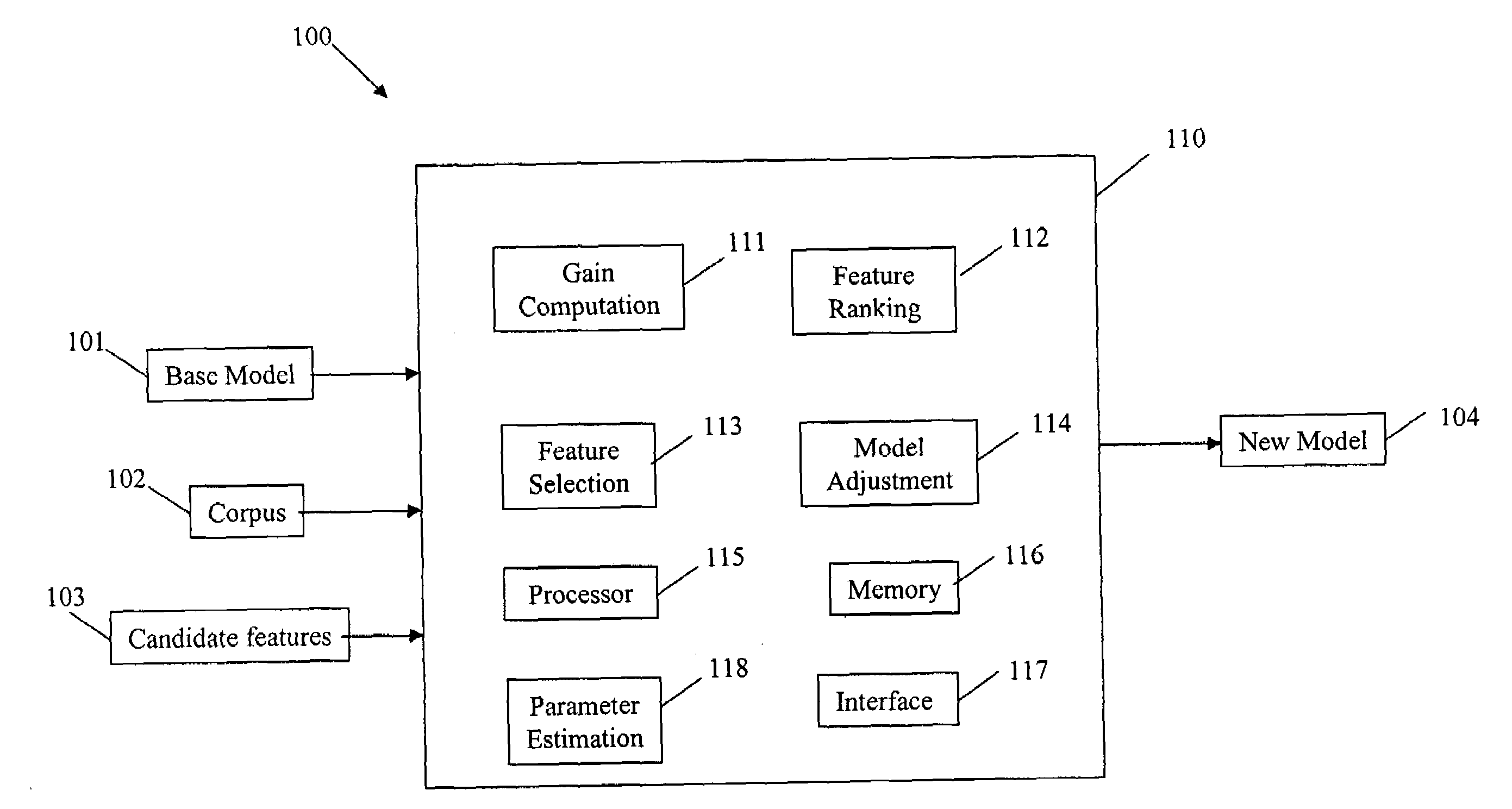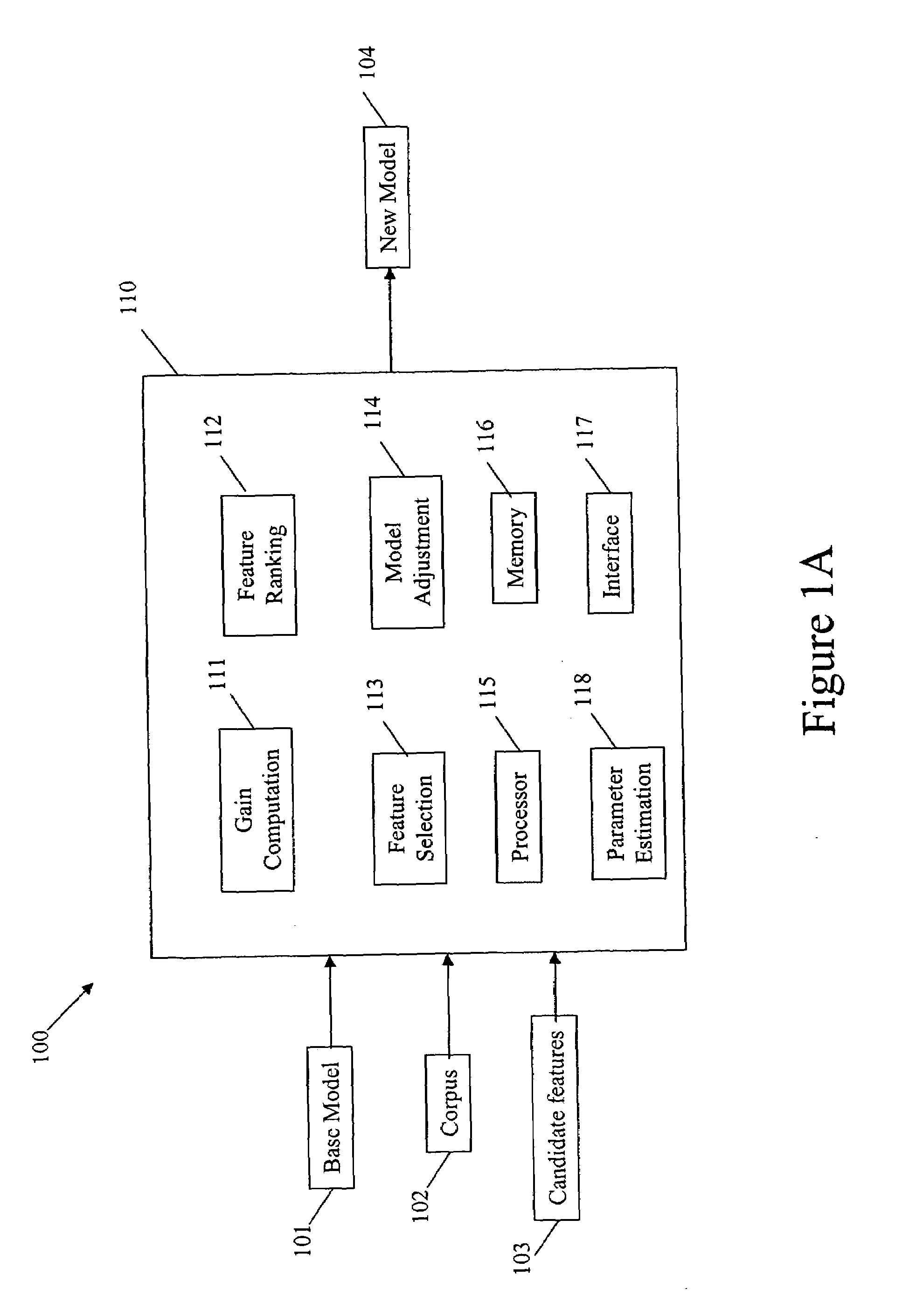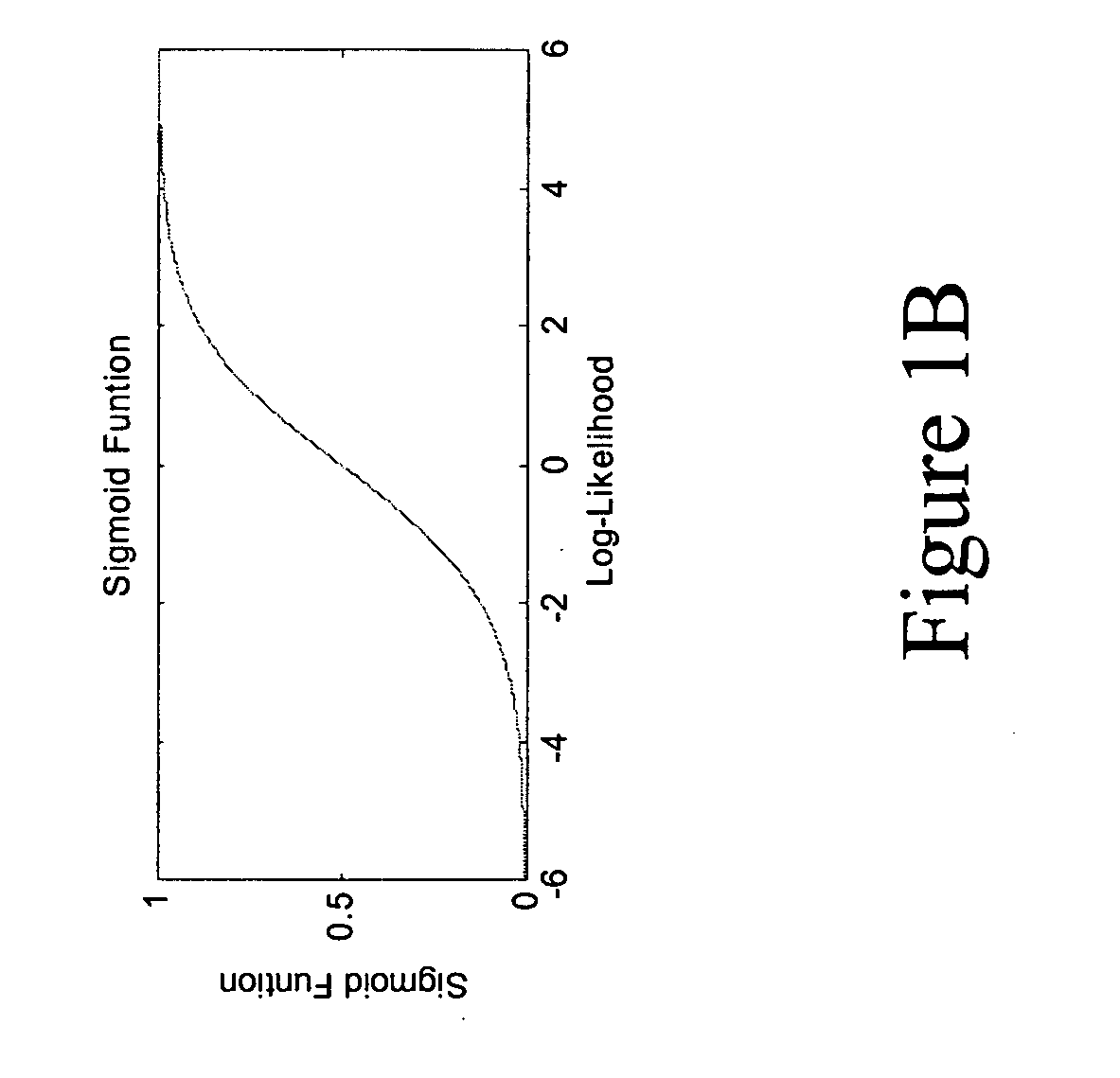Apparatus, method and system for maximum entropy modeling for uncertain observations
a maximum entropy and observation technology, applied in computing models, analogue processes for specific applications, instruments, etc., can solve problems such as inability to fully understand observations, subject to speech recognition errors, and need to rely on non-perfect preprocessing methods, so as to increase the robustness of any classification system, facilitate system operation, and extend the maximum entropy
- Summary
- Abstract
- Description
- Claims
- Application Information
AI Technical Summary
Benefits of technology
Problems solved by technology
Method used
Image
Examples
Embodiment Construction
[0036]Conditional Maximum Entropy (CME) modeling may be applied in natural language processing applications such as language modeling, machine translation, sentence boundary detection, etc. Traditionally, in Conditional Maximum Entropy (CME) modeling, the observations are considered to be accurate. However, in real-life applications, uncertain observations may arise. For example, uncertain observations may arise in speech-to-speech translation, question answering, and speech topic classification, where the language understanding components rely upon the speech recognizer output and therefore are exposed to speech recognition errors.
[0037]In many real-life applications, the observations are accompanied by a series of corresponding confidence scores, such as an output from a speech recognizer. It has been the case that the traditional CME models ignore these confidence scores. According to an exemplary embodiment and / or exemplary method of the present invention, the confidence scores ...
PUM
 Login to View More
Login to View More Abstract
Description
Claims
Application Information
 Login to View More
Login to View More - R&D
- Intellectual Property
- Life Sciences
- Materials
- Tech Scout
- Unparalleled Data Quality
- Higher Quality Content
- 60% Fewer Hallucinations
Browse by: Latest US Patents, China's latest patents, Technical Efficacy Thesaurus, Application Domain, Technology Topic, Popular Technical Reports.
© 2025 PatSnap. All rights reserved.Legal|Privacy policy|Modern Slavery Act Transparency Statement|Sitemap|About US| Contact US: help@patsnap.com



